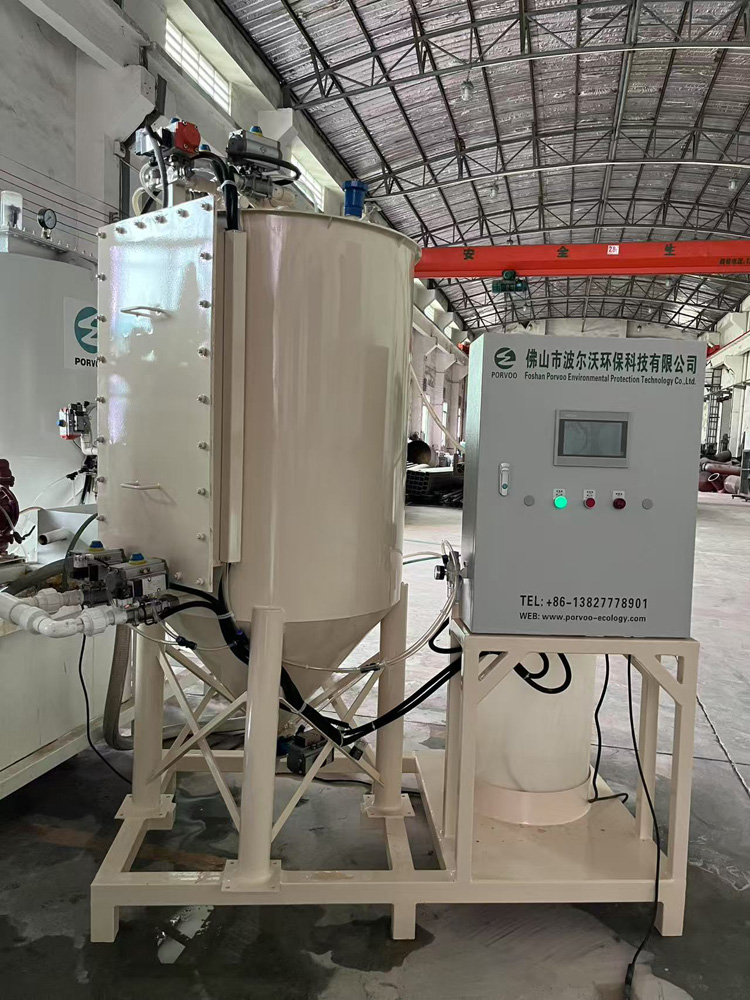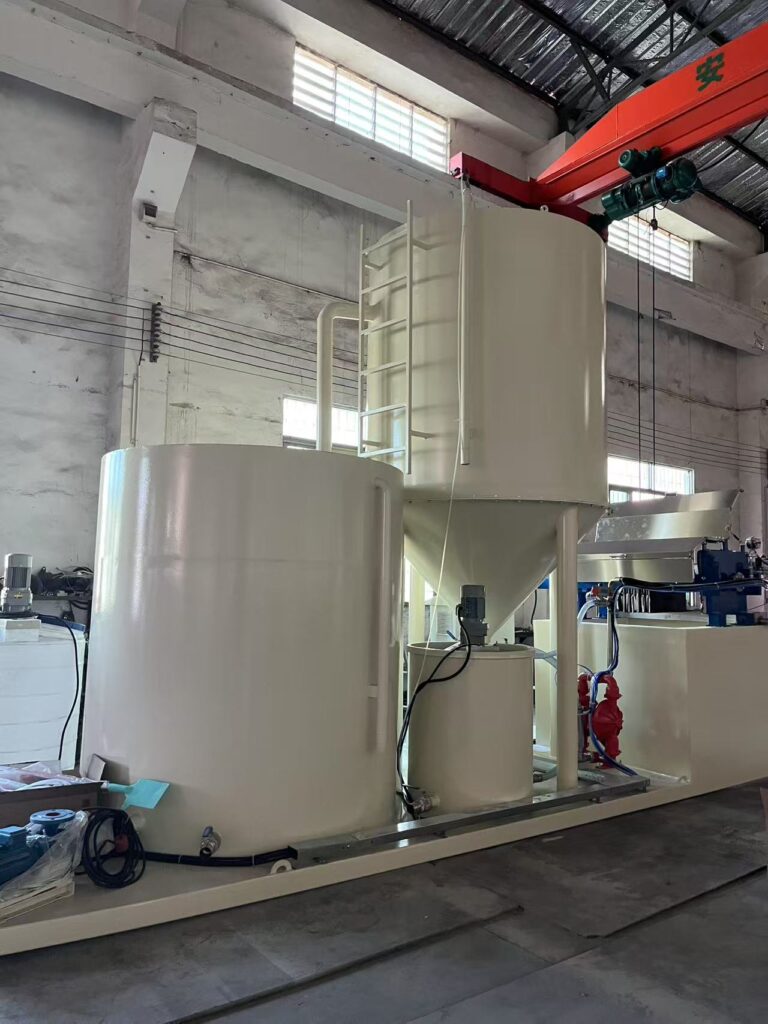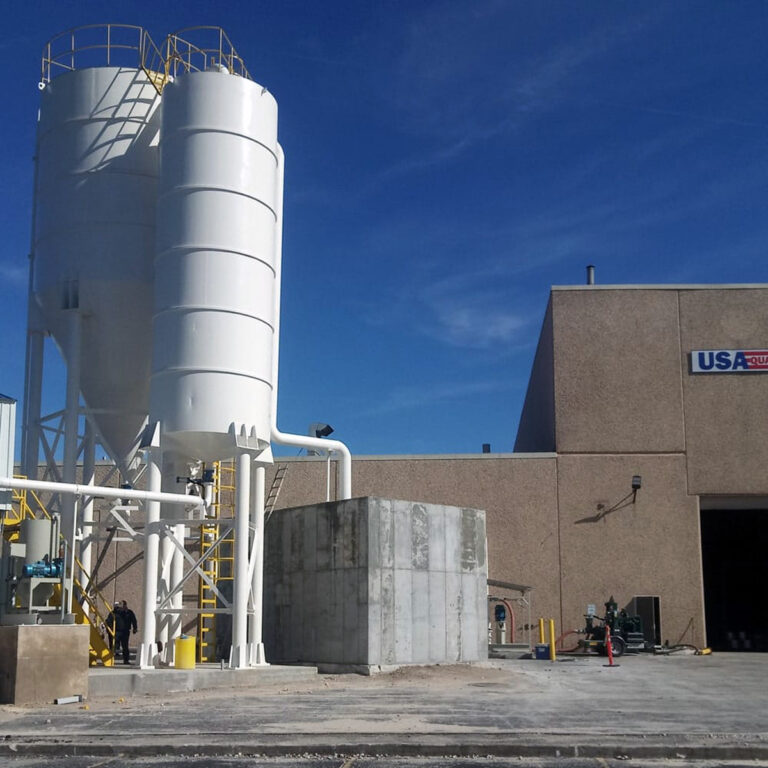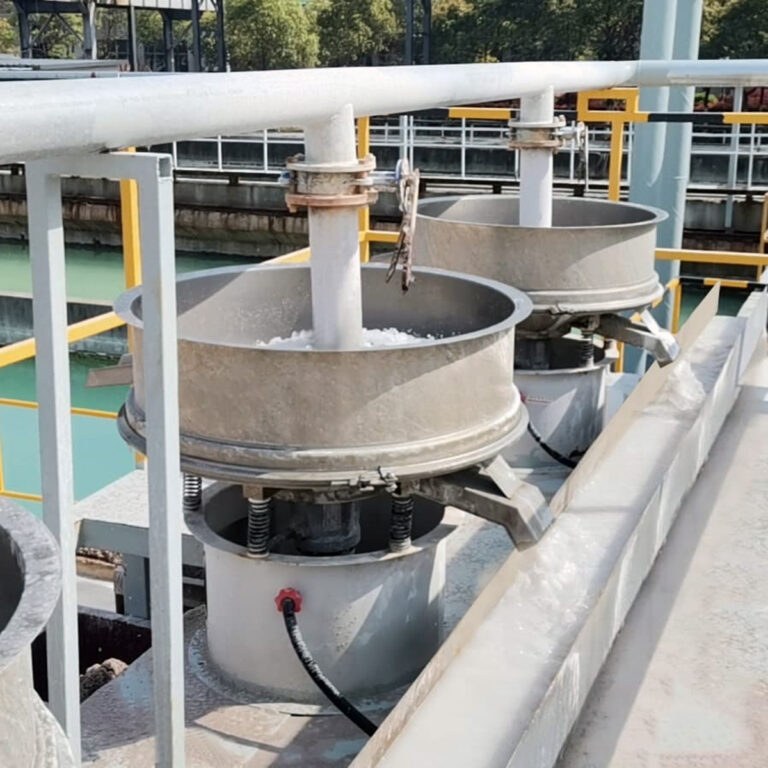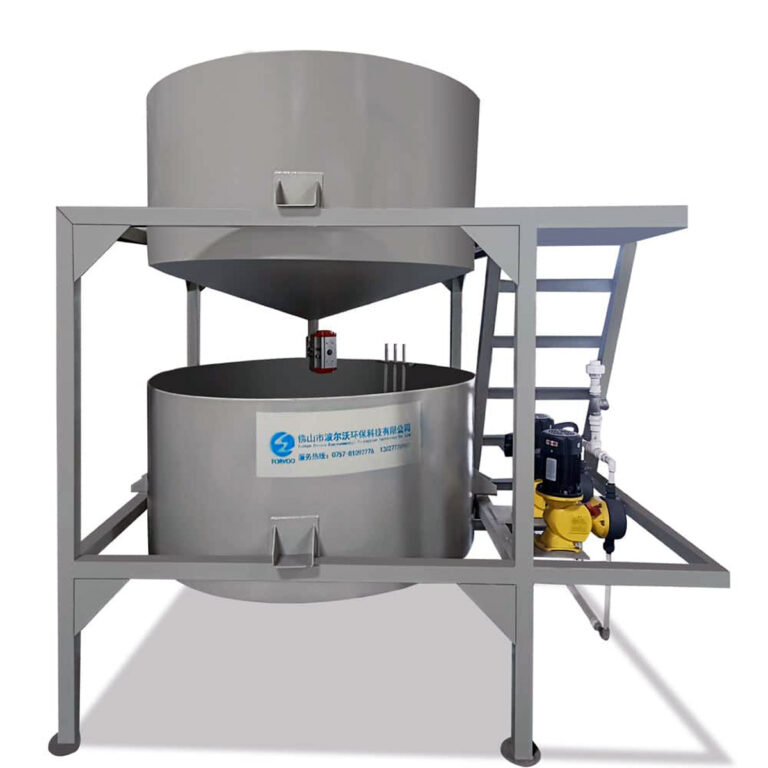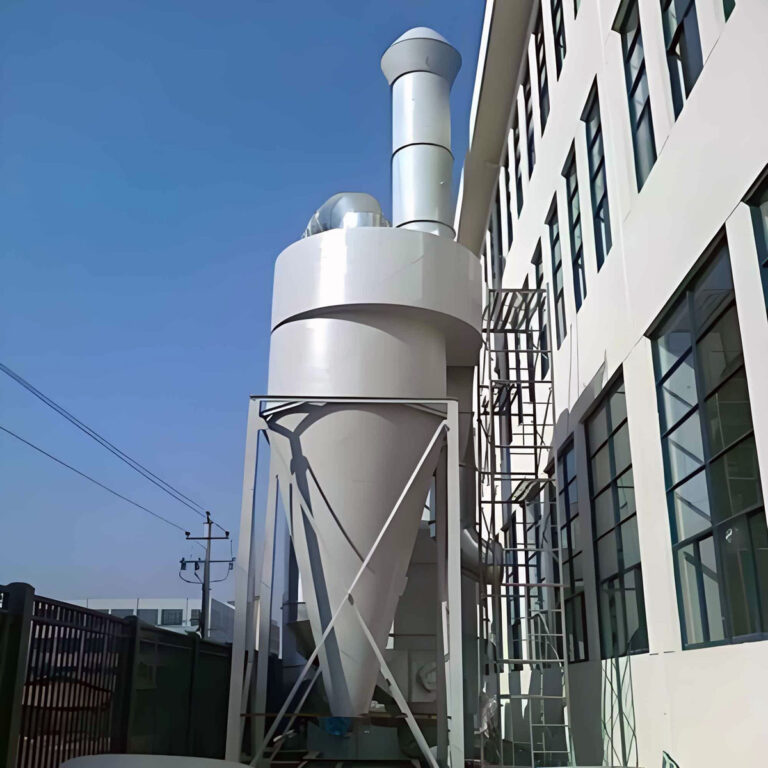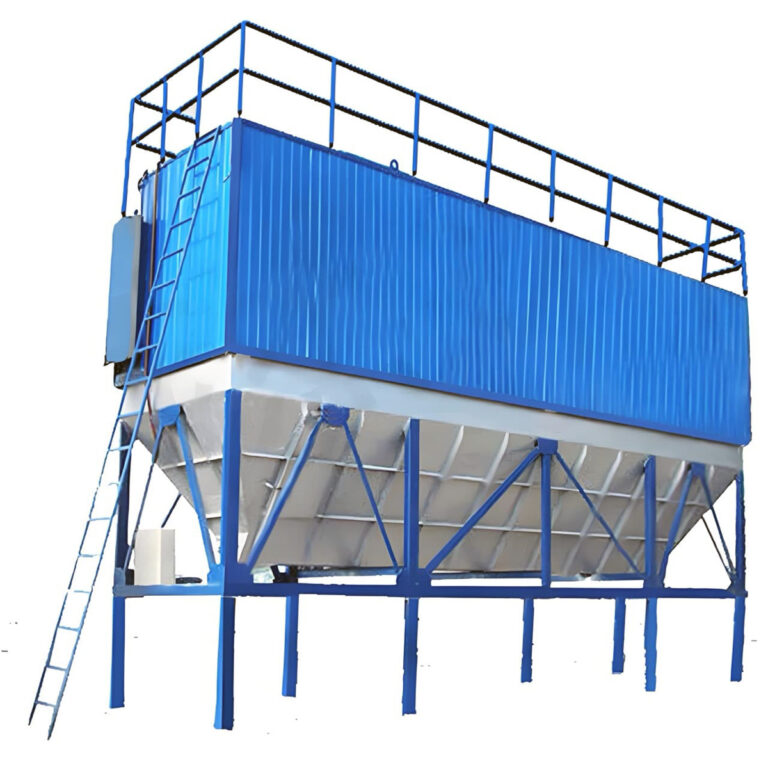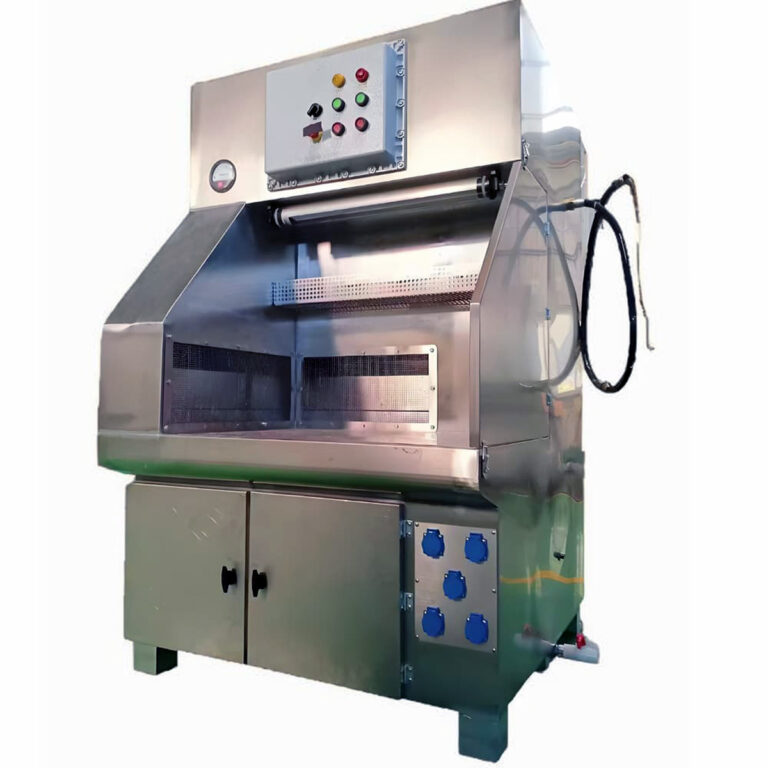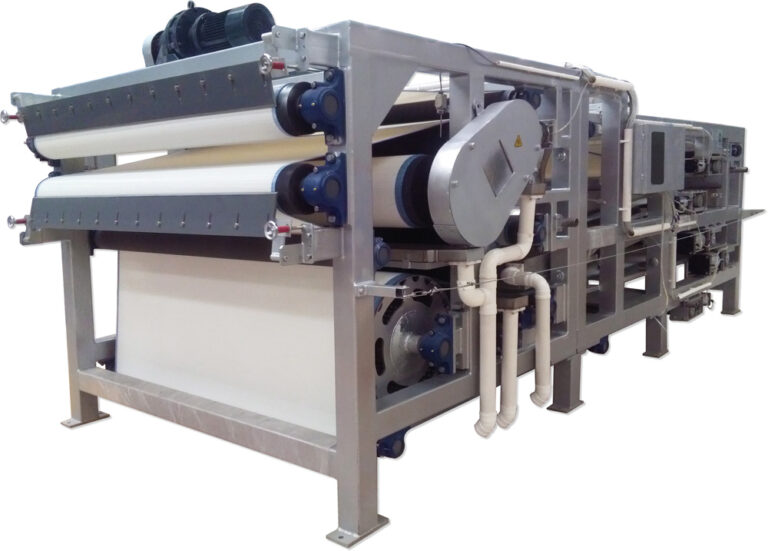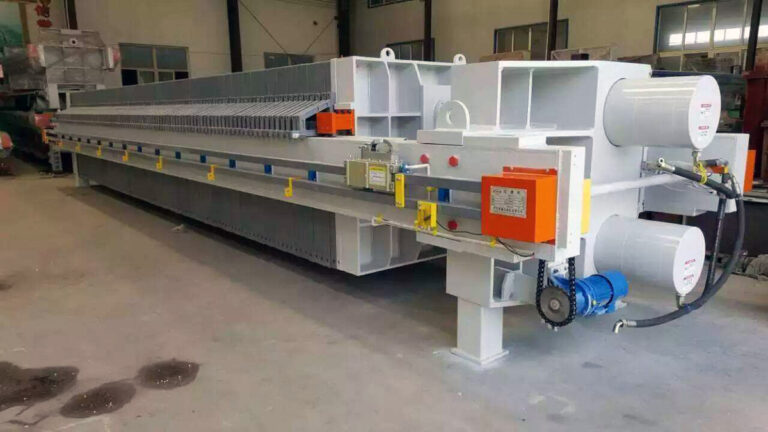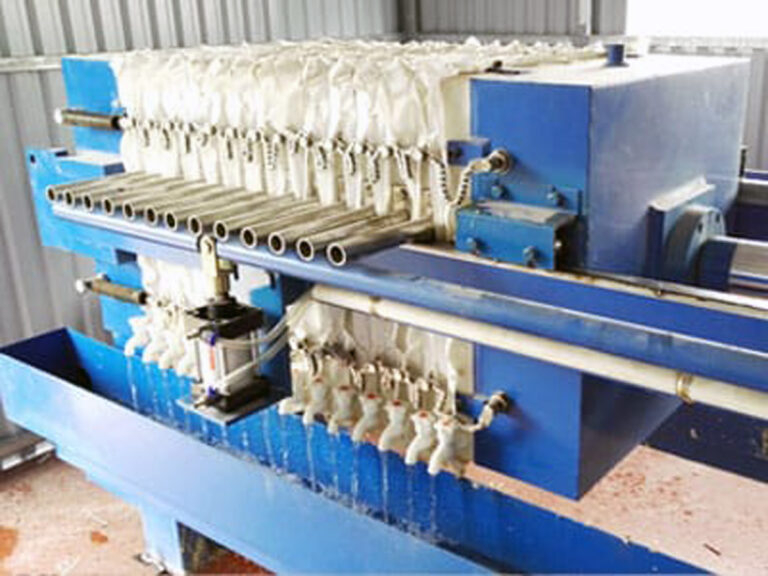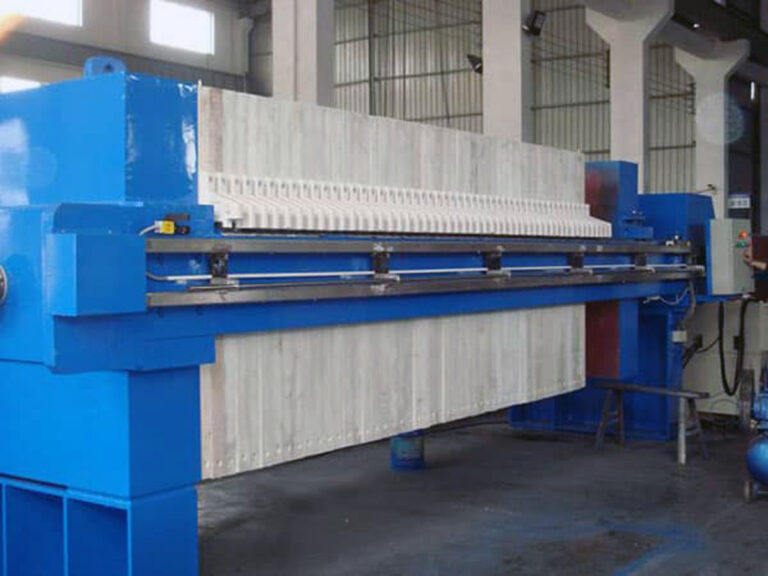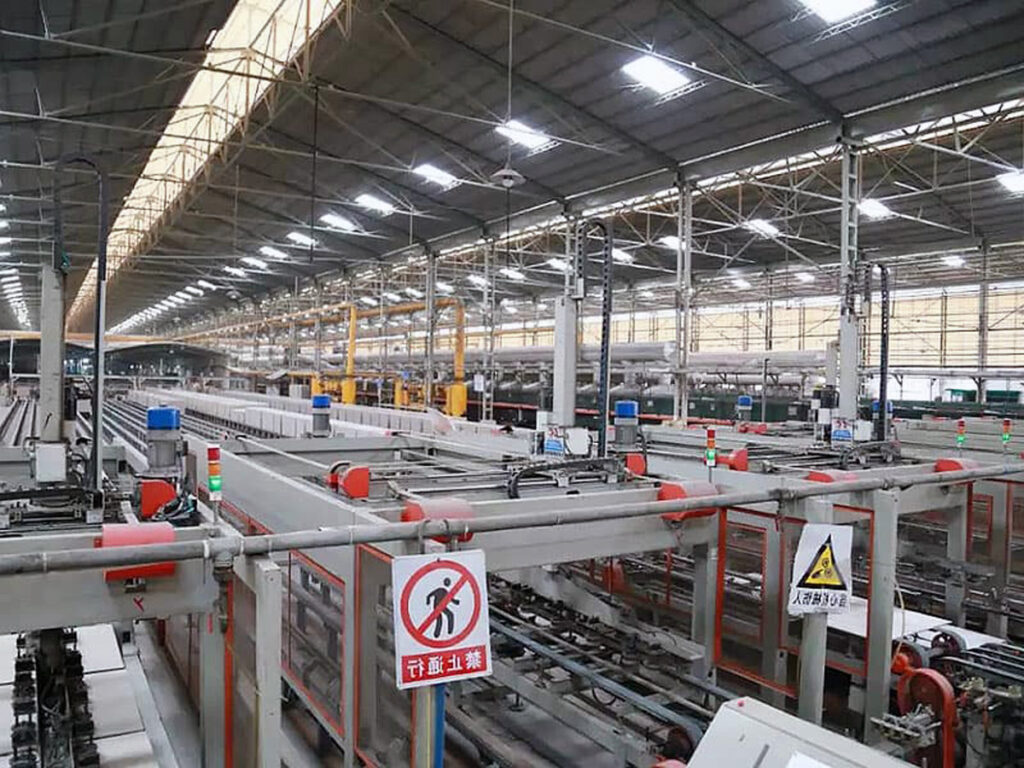Industrial facilities worldwide face mounting pressure to optimize their water treatment processes while meeting increasingly stringent environmental regulations. The complexity of selecting appropriate industrial water treatment specifications has become a critical challenge for engineers and facility managers who must balance performance, cost, and compliance requirements. Without proper specification guidelines, organizations risk system failures, regulatory violations, and substantial financial losses.
The consequences of inadequate specification planning extend far beyond initial installation costs. Poorly specified systems can result in 30-40% higher operational expenses, frequent maintenance shutdowns, and potential environmental penalties that can reach millions of dollars annually. Furthermore, mismatched specifications often lead to premature equipment replacement and compromised product quality in manufacturing processes.
PORVOO specializes in developing comprehensive specification frameworks that address these challenges through systematic analysis of technical requirements, performance parameters, and application-specific needs. This article provides detailed insights into the critical aspects of industrial water treatment specifications, offering practical guidance for optimizing system design and ensuring long-term operational success.
What Are Industrial Water Treatment Specifications?
Industrial water treatment specifications represent the detailed technical requirements that define how water treatment systems must perform under specific operational conditions. These specifications encompass everything from flow rates and contaminant removal efficiencies to equipment dimensions and control system parameters. Understanding these specifications is fundamental to achieving reliable, cost-effective water treatment operations.
Core Specification Categories
Wastewater treatment technical specs typically fall into several key categories that work together to define system performance. Physical specifications include flow rates, pressure requirements, temperature ranges, and equipment footprints. Chemical specifications detail pH ranges, dissolved oxygen levels, turbidity limits, and specific contaminant concentration targets. Biological specifications, when applicable, define microbial populations, settling characteristics, and organic loading rates.
Performance specifications establish the measurable outcomes that systems must achieve. For example, a pharmaceutical manufacturing facility might require 99.9% removal of specific organic compounds, while a food processing plant may focus on bacterial count reduction and BOD removal efficiency. These performance targets directly influence equipment selection and system design parameters.
Specification Development Process
The specification development process begins with comprehensive water quality analysis and operational requirement assessment. Engineers must evaluate incoming water characteristics, treatment objectives, discharge requirements, and operational constraints. This analysis forms the foundation for establishing realistic yet effective specification parameters.
“Successful specification development requires balancing ideal performance targets with practical operational constraints and budget limitations,” notes Dr. Sarah Chen, water treatment systems engineer at the International Water Association.
In our experience, the most effective specifications incorporate flexibility for future modifications while maintaining clear performance standards. This approach allows systems to adapt to changing operational requirements without requiring complete redesign.
| Specification Type | Key Parameters | Typical Range |
|---|---|---|
| Flow Rate | GPM/MGD | 100-50,000 GPM |
| Removal Efficiency | Percentage | 85-99.9% |
| Operating Pressure | PSI | 15-150 PSI |
| Temperature Range | °F | 32-180°F |
How Do Technical Parameters Define System Performance?
Technical parameters serve as the quantitative foundation for evaluating and comparing different treatment technologies. These parameters directly correlate with system performance, operational costs, and maintenance requirements. Understanding how specific parameters influence overall system behavior is crucial for making informed specification decisions.
Flow Rate and Hydraulic Parameters
Flow rate specifications determine the physical size and capacity requirements for treatment equipment. Water treatment equipment specifications must account for both average and peak flow conditions, as well as variations in flow patterns throughout operational cycles. Hydraulic retention time, surface loading rates, and overflow rates all derive from basic flow parameters but significantly impact treatment efficiency.
Peak flow conditions often require 150-200% of average design capacity to maintain treatment effectiveness during high-demand periods. This sizing consideration affects not only equipment selection but also facility layout and operational flexibility.
Contaminant-Specific Parameters
Different contaminants require specific parameter ranges for effective removal. Heavy metals typically require pH adjustment to 8.5-9.5 for optimal precipitation, while biological treatment systems perform best within narrower pH ranges of 6.5-8.0. Understanding these parameter interactions helps optimize overall system performance.
Industrial water system specifications must account for contaminant interactions that can affect treatment efficiency. For instance, high chloride concentrations can inhibit biological treatment processes, requiring pre-treatment or alternative treatment approaches.
Performance Monitoring Parameters
Continuous monitoring parameters provide real-time feedback on system performance and help identify potential issues before they become critical problems. Common monitoring parameters include turbidity, pH, dissolved oxygen, conductivity, and specific contaminant concentrations. These parameters enable automated control systems to maintain optimal treatment conditions.
A recent study by the Water Environment Federation found that facilities with comprehensive parameter monitoring systems achieved 15-25% better treatment efficiency compared to those relying on periodic manual testing alone.
What Equipment Specifications Should You Consider?
Equipment specifications form the heart of any industrial water treatment system, determining both performance capabilities and operational characteristics. These specifications must align with process requirements while considering factors such as reliability, maintenance needs, and lifecycle costs.
Mechanical Equipment Specifications
Pump specifications represent one of the most critical equipment categories, as they directly affect system hydraulic performance and energy consumption. Industrial wastewater system requirements typically specify pump flow rates, head pressures, efficiency ratings, and materials of construction. Centrifugal pumps operating at 75-85% efficiency are standard for most applications, while positive displacement pumps may be required for specialized chemical dosing applications.
Motor specifications must account for starting torque requirements, electrical supply characteristics, and environmental conditions. Variable frequency drives (VFDs) are increasingly specified for energy optimization, potentially reducing pump energy consumption by 20-40% in variable flow applications.
Chemical Feed System Specifications
Chemical feed systems require precise specifications for accuracy, reliability, and safety. Metering pump specifications typically include flow rate ranges, accuracy requirements (usually ±2-5%), and chemical compatibility ratings. Storage tank specifications must address material compatibility, secondary containment requirements, and mixing capabilities.
“Proper chemical feed system specification prevents both under-dosing, which compromises treatment effectiveness, and over-dosing, which wastes chemicals and may create secondary treatment issues,” explains Marcus Thompson, senior process engineer at Clean Water Technologies.
Instrumentation and Control Specifications
Modern water treatment systems rely heavily on automated control systems that require detailed instrumentation specifications. pH meters, turbidity analyzers, flow meters, and level sensors must maintain accuracy within specified ranges under varying operational conditions. Control system specifications should address communication protocols, data logging capabilities, and remote monitoring requirements.
| Equipment Type | Key Specifications | Performance Criteria |
|---|---|---|
| Pumps | Flow rate, head, efficiency | 75-85% efficiency |
| Mixers | Power, speed, mixing intensity | Complete mixing in 15-30 min |
| Filters | Surface area, media type, backwash | 95%+ removal efficiency |
How to Evaluate Wastewater Treatment Technical Requirements?
Evaluating wastewater treatment technical requirements involves systematic analysis of multiple factors that influence system design and performance. This evaluation process must consider both current operational needs and future expansion possibilities while maintaining compliance with regulatory standards.
Wastewater Characterization Analysis
Comprehensive wastewater characterization forms the foundation of technical requirement evaluation. This analysis must identify all significant contaminants, their concentrations, and their variability over time. Organic loading, measured as BOD or COD, typically ranges from 200-2000 mg/L in industrial applications, while specific toxic compounds may require detection limits in the parts-per-billion range.
Water treatment technical parameters vary significantly based on wastewater characteristics. For example, high-strength industrial wastewater may require multi-stage treatment processes, while relatively clean process water might need only basic filtration and disinfection.
Regulatory Compliance Assessment
Regulatory requirements establish minimum performance standards that treatment systems must achieve. These requirements vary by location, industry type, and receiving water characteristics. NPDES permits typically specify monthly and daily maximum limits for parameters such as BOD, TSS, pH, and specific pollutants.
Recent regulatory trends emphasize nutrient removal, with nitrogen and phosphorus limits becoming increasingly stringent. These requirements may necessitate advanced biological treatment processes or chemical precipitation systems that significantly impact overall system specifications.
Treatment Technology Matching
Matching treatment technologies to specific wastewater characteristics requires understanding the capabilities and limitations of different treatment approaches. Biological treatment systems excel at removing organic compounds but may struggle with toxic materials or extreme pH conditions. Physical-chemical treatment processes offer more precise control but typically require higher chemical and energy inputs.
A comprehensive case study from a pharmaceutical manufacturing facility demonstrated that proper technology matching reduced treatment costs by 35% while improving effluent quality consistency. The key was selecting treatment processes that matched the specific characteristics of their process wastewater rather than applying generic treatment approaches.
What Are the Key System Design Specifications?
System design specifications integrate individual equipment requirements into cohesive treatment systems that achieve target performance levels. These specifications must address hydraulic design, process sequencing, control integration, and operational flexibility requirements.
Hydraulic Design Specifications
Hydraulic design specifications establish the flow patterns and residence times that enable effective treatment. Detention times in primary clarifiers typically range from 1.5-3.0 hours, while biological treatment systems may require 8-24 hours depending on loading rates and treatment objectives. Proper hydraulic design prevents short-circuiting and ensures uniform treatment throughout the system.
Industrial water treatment specifications must account for hydraulic variations that occur during normal operations. Peak flow conditions, equipment maintenance periods, and emergency bypass requirements all influence hydraulic design specifications. Effective designs incorporate flexibility to handle these variations without compromising treatment performance.
Process Control Integration
Modern treatment systems require sophisticated control integration to maintain optimal performance across varying conditions. Control specifications must address sensor placement, control loop design, alarm systems, and data management requirements. Distributed control systems (DCS) or programmable logic controllers (PLCs) provide the processing power needed for complex treatment processes.
Automated control systems can maintain treatment parameters within ±5% of target values, compared to ±15-20% variation typical with manual control. This improved control precision translates directly to more consistent effluent quality and reduced chemical consumption.
Redundancy and Reliability Specifications
Critical treatment systems require redundancy specifications to ensure continuous operation during equipment maintenance or failures. Pump systems typically specify N+1 redundancy, meaning one backup pump for every operating pump. Critical instrumentation may require dual sensors with automatic switchover capabilities.
System availability specifications of 95-99% are common for industrial applications, depending on the consequences of treatment system downtime. Achieving these availability targets requires careful specification of equipment reliability, maintenance access, and spare parts availability.
How Do Compliance Standards Impact Technical Specifications?
Compliance standards serve as the regulatory framework that establishes minimum performance requirements for industrial water treatment systems. These standards directly influence technical specifications by setting mandatory limits for effluent quality, operational practices, and monitoring requirements.
Federal and State Regulatory Requirements
Federal regulations under the Clean Water Act establish technology-based effluent limitations that vary by industry category. These limitations define maximum allowable concentrations for conventional pollutants as well as industry-specific toxic compounds. Wastewater treatment technical specs must ensure compliance with both technology-based limits and water quality-based limits that protect receiving waters.
State regulations often impose additional requirements that exceed federal minimums. California’s Title 22 regulations, for example, establish stringent requirements for water reuse applications that significantly impact treatment system specifications. These enhanced requirements may necessitate advanced treatment processes such as membrane filtration, reverse osmosis, or advanced oxidation.
Industry-Specific Standards
Different industries face unique compliance challenges that influence technical specifications. Pharmaceutical manufacturing facilities must meet FDA requirements for process water quality in addition to environmental discharge standards. Food processing plants must comply with HACCP requirements that affect treatment system design and operational procedures.
“Industry-specific standards often drive specification requirements beyond basic environmental compliance, requiring treatment systems that support both regulatory compliance and product quality objectives,” notes Jennifer Rodriguez, environmental compliance manager at Industrial Water Solutions.
Emerging Regulatory Trends
Regulatory trends toward more stringent contaminant limits and expanded monitoring requirements continue to influence specification development. Per- and polyfluoroalkyl substances (PFAS) regulations are emerging as significant drivers of advanced treatment specifications, requiring technologies capable of removing these persistent compounds to ng/L levels.
What Performance Metrics Matter Most?
Performance metrics provide quantitative measures for evaluating treatment system effectiveness and identifying optimization opportunities. These metrics must balance treatment quality objectives with operational efficiency and cost considerations.
Treatment Efficiency Metrics
Treatment efficiency metrics measure how effectively systems remove target contaminants from wastewater streams. Water treatment equipment specifications typically define removal efficiencies ranging from 85% for conventional treatment to 99.9% for advanced treatment processes. These efficiency requirements directly influence equipment selection and system design parameters.
Consistency metrics are equally important, as regulatory compliance requires sustained performance over time. Systems that achieve 95% average removal efficiency but experience frequent excursions below 90% may face compliance challenges, while systems maintaining 90% efficiency with minimal variation provide more reliable regulatory compliance.
Operational Performance Metrics
Operational performance metrics focus on system reliability, energy consumption, and maintenance requirements. Energy consumption, measured in kWh per thousand gallons treated, provides a key indicator of operational efficiency. Well-designed systems typically achieve 2-8 kWh/1000 gallons, depending on treatment complexity and effluent quality requirements.
Maintenance metrics include scheduled maintenance frequency, unplanned downtime, and equipment replacement rates. Systems with comprehensive preventive maintenance programs typically achieve 95-98% availability compared to 85-90% for reactive maintenance approaches.
Cost Performance Metrics
Cost performance metrics evaluate both capital and operational expenses on a per-unit-treated basis. Total cost of ownership analyses should include initial capital costs, energy expenses, chemical costs, labor requirements, and equipment replacement reserves. These comprehensive cost evaluations help identify the most cost-effective specification approaches for specific applications.
A recent analysis of over 200 industrial treatment systems found that systems with properly optimized specifications achieved 20-30% lower total costs compared to over-designed systems, while maintaining superior regulatory compliance records.
| Performance Metric | Target Range | Measurement Frequency |
|---|---|---|
| Removal Efficiency | 85-99.9% | Daily |
| Energy Consumption | 2-8 kWh/1000 gal | Monthly |
| System Availability | 95-99% | Continuous |
| Chemical Usage | Varies by process | Weekly |
How to Choose the Right Specifications for Your Application?
Selecting appropriate specifications requires systematic evaluation of technical requirements, operational constraints, and economic considerations. This selection process must balance performance objectives with practical limitations while maintaining flexibility for future modifications.
Application-Specific Considerations
Different applications impose unique specification requirements that must be carefully evaluated. Cooling water systems prioritize corrosion control and scaling prevention, typically requiring specifications for pH control, corrosion inhibitors, and biocide application. Process water systems focus on contaminant removal and water quality consistency, emphasizing filtration efficiency and monitoring capabilities.
Industrial water treatment specifications for food and beverage applications must address both environmental discharge requirements and product quality standards. These dual requirements often necessitate treatment processes that exceed basic environmental compliance standards to protect product integrity and brand reputation.
Economic Optimization Strategies
Economic optimization requires balancing capital costs against operational expenses over the system’s expected lifetime. Higher-efficiency equipment typically requires greater initial investment but may provide lower operational costs through reduced energy consumption and maintenance requirements. Life-cycle cost analyses help identify the most economically advantageous specification approaches.
Value engineering techniques can identify opportunities to optimize specifications without compromising performance. For example, selecting standard equipment sizes rather than custom configurations can reduce costs by 15-25% while maintaining adequate performance margins.
Future Expansion Considerations
Effective specifications incorporate provisions for future expansion or modification without requiring complete system redesign. This forward-thinking approach might include oversized electrical systems, additional instrumentation connections, or modular equipment arrangements that facilitate capacity increases.
While specifications should provide adequate performance margins, avoiding significant over-design prevents unnecessary capital expenses. Our experience suggests that 15-25% design margins provide appropriate safety factors without excessive costs, though specific applications may require different approaches based on consequence-of-failure considerations.
Industrial water treatment specifications form the foundation of successful treatment system design and operation. By systematically addressing technical parameters, equipment requirements, compliance standards, and performance metrics, organizations can develop specifications that achieve treatment objectives while optimizing operational efficiency and costs. The key insights presented in this analysis emphasize the importance of comprehensive requirement evaluation, proper technology matching, and integrated system design approaches.
Modern specification development must anticipate emerging regulatory requirements, technological advances, and operational flexibility needs. Organizations that invest in thorough specification development typically achieve 20-30% better long-term performance compared to those using generic or inadequate specifications. This performance advantage translates directly to improved regulatory compliance, reduced operational costs, and enhanced operational reliability.
The future of industrial water treatment specifications will likely emphasize smart monitoring systems, energy optimization, and advanced treatment technologies for emerging contaminants. Organizations preparing for these developments should consider comprehensive water treatment solutions that provide the flexibility and performance capabilities needed for evolving industrial requirements.
What specific challenges does your facility face in developing appropriate water treatment specifications, and how might emerging technologies address these requirements?
Frequently Asked Questions
Q: What is industrial water treatment and why are technical specifications important?
A: Industrial water treatment involves processes that prepare water for specific industrial uses by removing impurities such as hardness, salts, bacteria, and suspended solids. Technical specifications are crucial because they define the required water quality standards to prevent corrosion, scaling, and biological growth within industrial equipment like boilers and cooling towers. Meeting these specifications ensures the longevity of equipment and compliance with environmental and operational standards.
Q: What are the common processes involved in industrial water treatment according to technical specifications?
A: Typical industrial water treatment processes include:
- Membrane filtration (reverse osmosis) to remove ions, molecules, and larger particles
- Ion exchange for hardness removal and producing high-purity water
- Lime softening to precipitate minerals by adjusting pH
- Deaeration or degasification to eliminate dissolved gases such as oxygen and carbon dioxide
- Chemical treatments like corrosion inhibitors or disinfectants
These steps are often combined depending on the source water quality and the desired treated water specifications.
Q: How does membrane filtration (reverse osmosis) function in industrial water treatment?
A: Membrane filtration forces water through a semi-permeable membrane under pressure to separate contaminants. The purified water, called permeate, passes through, while impurities including dissolved salts, bacteria, and hardness-causing minerals are rejected and flushed out as concentrate. Pressure and membrane type vary based on the raw water quality and final water specifications required by the industrial application.
Q: What role do ion exchange systems play in meeting industrial water treatment technical specifications?
A: Ion exchange units are used primarily to remove hardness-causing calcium and magnesium ions by exchanging them for sodium ions, effectively softening the water. For high-pressure or large-volume applications, deionizers based on ion exchange provide very high water purity and conductivity control essential for sensitive processes such as boiler feedwater treatment.
Q: Why is deaeration important in industrial water treatment technical specifications?
A: Deaeration removes dissolved oxygen and carbon dioxide from treated water to prevent corrosion in boilers, piping, and condensate systems. Oxygen and carbon dioxide accelerate corrosion, causing equipment damage and failure. Proper deaeration ensures that the treated water meets corrosion control requirements specified in industrial water treatment guidelines.
Q: How are industrial water treatment systems designed to comply with technical specifications?
A: Industrial water treatment systems are designed with multiple treatment processes arranged in series or parallel to achieve target water quality. The design considers raw water contaminants, required output water standards, and specific industrial use cases. Process controls, monitoring equipment, and chemical dosing are tailored to maintain stable operation and ensure compliance with technical specifications for safety, efficiency, and regulatory needs.
External Resources
Definitive Guide to Industrial Water Treatment – In-depth guide authored by industry experts covering processes, technical requirements, and system considerations for industrial water treatment applications.
UFC 3-230-13 Industrial Water Treatment Operation and Maintenance (PDF) – Official U.S. government document outlining technical specifications, operational protocols, and maintenance requirements for industrial water treatment systems.
INDUSTRIAL WATER TREATMENT SYSTEMS – HubSpot (PDF) – Comprehensive e-book introducing industrial water treatment systems, key technologies, and step-by-step technical processes.
The basics of industrial water treatment – Article explaining fundamental industrial water treatment methods, system design considerations, and the technologies commonly used to meet technical and safety specifications.
NSF Standards for Water Treatment Systems – Overview of technical standards and certification protocols applied to water treatment systems, with details on performance and safety specifications.
Industrial Water Treatment – Lenntech – Overview of industrial water treatment solutions, processes, and technical parameters, with a focus on engineering and compliance requirements.
